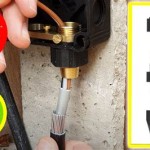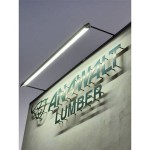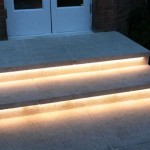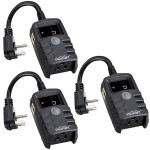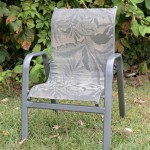Can I Use Outdoor Flood Lights Indoors? Understanding the Implications
The question of whether outdoor flood lights can be safely and effectively used indoors is a common one, particularly as individuals seek versatile lighting solutions. While technically feasible in some situations, the practice warrants careful consideration due to potential safety hazards, functional limitations, and efficiency concerns. Understanding the differences between indoor and outdoor lighting fixtures is crucial before making such a substitution.
Typically, outdoor flood lights are designed to illuminate large areas, often with a bright, intense light. They are built to withstand harsh weather conditions, including rain, snow, and extreme temperatures. Indoor lighting, on the other hand, is designed for a more controlled environment, focusing on providing comfortable and aesthetically pleasing illumination within a living space. This fundamental difference in design philosophy necessitates a thorough examination of the factors involved.
Several considerations come into play when evaluating the suitability of using outdoor flood lights indoors. These considerations range from the technical aspects of electrical safety and heat dissipation to the practical aspects of light intensity, color temperature, and fixture aesthetics. Ignoring these factors can lead to undesirable outcomes, including safety hazards, discomfort, and energy inefficiency.
Safety Considerations: Addressing Potential Hazards
One of the paramount concerns when using outdoor flood lights indoors is electrical safety. Outdoor fixtures are often designed with different wiring configurations and insulation standards to accommodate the demands of outdoor environments. They are typically built to be more robust, with thicker insulation and weatherproof seals to prevent water ingress and electrical shorts. Indoor fixtures, designed for a drier, more controlled environment, may not have the same level of protection.
Using an outdoor flood light indoors without proper modification or understanding of electrical codes can increase the risk of electrical shock or fire. Specifically, the grounding requirements may differ, and improper grounding can create a hazard. It is imperative to consult with a qualified electrician to ensure that the wiring is compatible and that the fixture is properly grounded if it is to be used indoors.
Another significant safety concern is heat dissipation. Outdoor flood lights, particularly those utilizing older technologies such as halogen lamps, can generate a considerable amount of heat. In an outdoor environment, this heat is typically dissipated into the surrounding air. However, in a confined indoor space, the heat can build up, potentially posing a fire hazard if the fixture is placed near flammable materials such as curtains, furniture, or paper. Furthermore, excessive heat can shorten the lifespan of the fixture and potentially damage the surrounding structures.
LED flood lights, while generally cooler than halogen alternatives, still generate heat. It's crucial to ensure adequate ventilation around any flood light used indoors. Checking the manufacturer's specifications for heat dissipation requirements is essential. If the fixture feels excessively hot to the touch, it should be turned off immediately and reevaluated for suitability in the indoor environment.
Finally, UV emissions from certain types of outdoor flood lights, especially older mercury vapor lamps, can pose a health risk with prolonged exposure. While most newer flood lights use UV filters, it’s crucial to verify this and avoid using lights without adequate UV protection indoors. Long-term exposure to UV radiation can damage the eyes and skin. Carefully review the manufacturer's specifications to ascertain the UV emission levels and take appropriate precautions.
Functional Limitations: Evaluating Light Quality and Performance
Beyond safety, the functionality of outdoor flood lights indoors must be carefully evaluated. The light intensity of outdoor flood lights is often much higher than what is typically desired or comfortable in an indoor environment. Flood lights are designed to illuminate large spaces, such as parking lots or building facades. Using such a bright light indoors can result in glare, eye strain, and general discomfort. The human eye is more sensitive to bright light in a confined space, and the excessive brightness can disrupt the natural circadian rhythm, potentially affecting sleep patterns and overall well-being.
The color temperature of the light is another critical factor. Outdoor flood lights often have a cooler color temperature (higher Kelvin value), which appears as a bright, bluish-white light. While appropriate for outdoor security lighting, this color temperature can feel harsh and sterile indoors, making the space less inviting and comfortable. Indoor lighting typically employs warmer color temperatures (lower Kelvin values) that produce a more yellowish, inviting glow. Choosing the appropriate color temperature is crucial for creating the desired ambiance and mood within a living space.
Light distribution is also a significant consideration. Flood lights are designed to cast a wide beam of light over a large area. Indoors, this can result in uneven lighting, with some areas being excessively bright while others remain poorly illuminated. The lack of focused light control can make it difficult to perform tasks that require concentrated illumination, such as reading or working at a desk. Indoor lighting fixtures are designed with specific reflectors and diffusers to control the direction and spread of light, ensuring even and comfortable illumination.
Flicker is another potential issue, particularly with older flood light technologies. Flicker can cause eye strain, headaches, and even trigger seizures in individuals with photosensitive epilepsy. While modern LED flood lights are less prone to flicker, it's prudent to check the specifications and ensure that the fixture is flicker-free before using it indoors.
Efficiency and Aesthetics: Balancing Cost and Design
The energy efficiency of outdoor flood lights is another important factor to consider. Older flood light technologies, such as halogen lamps, are notoriously energy-inefficient, consuming a significant amount of electricity to produce light. While LED flood lights are more energy-efficient, they may still be less efficient than dedicated indoor lighting fixtures designed for lower light output needs. Using an overly bright and inefficient flood light indoors can lead to higher energy bills and a larger carbon footprint.
Furthermore, the aesthetic design of outdoor flood lights may not be suitable for indoor environments. Outdoor fixtures are often designed for durability and functionality, with a focus on weather resistance rather than aesthetic appeal. Their bulky, industrial appearance can clash with the décor of a typical living space. Indoor lighting fixtures are available in a wide range of styles and finishes to complement various interior design schemes. Integrating an outdoor flood light into an indoor setting may require significant effort to conceal or disguise the fixture to mitigate its visual impact.
The cost-effectiveness of using outdoor flood lights indoors must also be considered. While it may seem economical to repurpose an existing outdoor fixture, the long-term costs, including potential safety hazards, energy inefficiency, and aesthetic compromises, can outweigh any initial savings. Investing in appropriate indoor lighting fixtures designed for the specific needs of the space is often a more prudent and cost-effective approach.
Dimming capabilities represent another factor to evaluate. Many indoor lighting fixtures are designed to be dimmable, allowing users to adjust the light intensity to suit their needs and preferences. Outdoor flood lights, particularly those with older technologies, may not be dimmable or may require specialized dimming systems. The inability to control the light intensity can limit the versatility of the fixture and make it unsuitable for certain indoor applications.
Ultimately, the decision of whether to use outdoor flood lights indoors should be based on a careful assessment of the potential risks and benefits. While technically feasible in some situations, it's crucial to prioritize safety, functionality, and energy efficiency. Consulting with a qualified electrician and considering the specific needs of the indoor environment are essential steps in making an informed decision. Choosing lighting solutions designed and certified for indoor use remains the safest and most effective approach to achieving comfortable and efficient illumination.

Futt08 Miboxer 200w Led Garden Floodlight Technologies

Ip66 Outdoor Led Floodlights

Ip66 Outdoor Led Floodlights

100w Rgb Cct Led Floodlight Mi Light S

Fulcrum Wireless Led Indoor Outdoor Floodlight With Motion Sensor Auto On Off And Battery Powered Black Energy Class A

Choosing The Right Led Indoor Flood Lights Mic

50w Ip65 Led Floodlight 6000k Black

How To Choose Proper Led Indoor Flood Lights

Mini Floodlight Spotlight Fumagalli Minitommy Led Spot For Outdoor Cmd

4 Pack Dimmable Outdoor Rgb Led Flood Light Ip66 Waterproof With Remote Control 16 Colors Lighting Modes For Indoor And 50w
Related Posts



